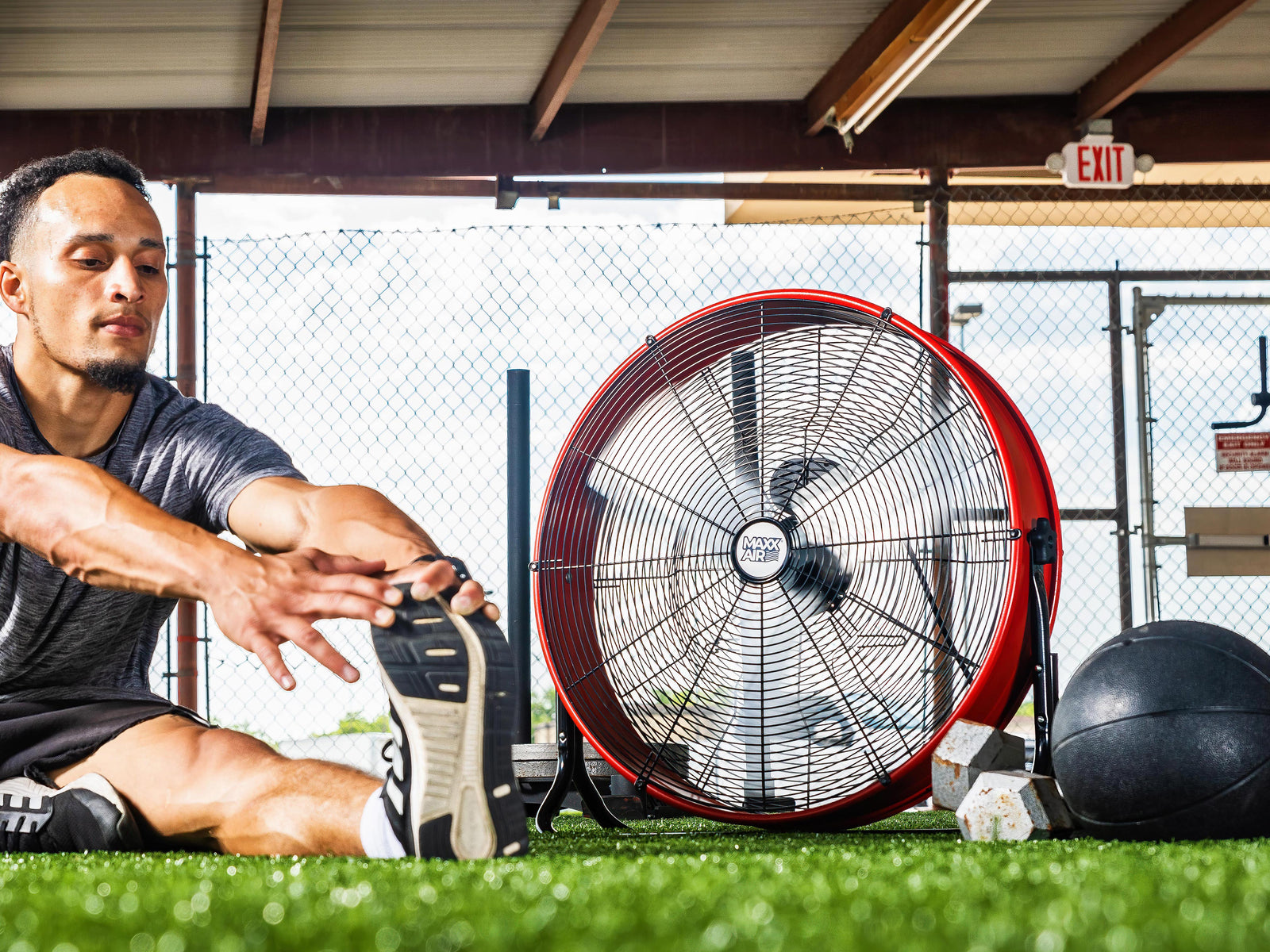
It just keeps getting hotter! According to the CDC, “…there are 67,512 emergency department visits due to heat, on average” in the United States each year. Exposure to environmental heat, combined with strenuous physical activity while wearing layers of uniform and protective equipment, can place athletes at risk of heat-related injuries.

|
Prepare for heat and humidity. Players and coaches should be trained for—and aware of—the signs of heat stress to keep everyone safe and the game going, including what puts them at risk, the symptoms of heat-related illness, and how to avoid overheating. Need a head start? Take a look at this table from the CDC and NIOSH to understand signs of heat illness and first aid and take the CDC's course on heat-related illness designed for everyone, be it coach, parent, or athlete. |

Introducing players to the heat slowly over time has proven to be an effective way to acclimate their bodies to better cope with hot temperatures over time. NIOSH recommends “gradually [increasing] exposure time in hot environmental conditions over a 7-14 day period,” with “no more than 20% exposure to heat on day 1 and an increase of no more than 20% exposure on each additional day.”

It’s important to know your environment and adjust your schedule accordingly. Look at forecasts to schedule game and practice times during the coolest parts of the day, monitor weather conditions during activities and prepare a response plan to extreme temperatures in advance so you’re not left wondering what to do when outdoor temps are severe.
For older players, create a buddy system to help monitor a player’s condition when training. Should a teammate show signs of heat stress, have a procedure already in place for notification to quickly administer first aid or, if more severe, conduct an emergency response.

Take steps to make improvements to outdoor areas to protect athletes.
-
Offer frequent breaks to hydrate and provide access to water at all times. NIOSH details that those “working in the heat [should] drink 1 cup (8 ounces) of water every 15-20 minutes.”
-
Create shaded areas for rest with pop-up canopies if in an open area, or use naturally shaded areas when available.
-
Limited air movement can make it harder to cool down. Circulate air around players using outdoor-rated fans, especially during breaks and at cooling stations. Maxx Air misting fans help combat heat stress using a combination of water and airflow to lower the ambient temperature by as much as 30°F and are a compact cooling solution to take to practice or away games.
Want to make an investment for player safety with one of these fans? Explore our options below! If you’re not sure what fan is best for you, contact us! We’re available to answer any questions you might have.

|
 |
 |
| 18 In. 3-Speed Misting Fan with 10 Gal. Tank | 18 In. 3-Speed Misting Fan with 40 Gal. Tank | 18 In. 3-Speed High Pressure Misting Fan with 40 Gal. Tank |
We encourage you to beat the heat and play it safe this summer! Don’t allow you or your team to become another statistic when it comes to heat stress.
Resources :
- The National Institute for Occupational Safety and Health (NIOSH). (2017, February 17). Heat stress: First aid for heat illness. Retrieved June 27, 2022, from https://www.cdc.gov/niosh/mining/UserFiles/works/pdfs/2017-128.pdf
- Centers for Disease Control and Prevention. (n.d.). Heat & Health tracker. Centers for Disease Control and Prevention. Retrieved June 27, 2022, from https://ephtracking.cdc.gov/Applications/heatTracker/
- The National Institute for Occupational Safety and Health (NIOSH). (2018, June 6). Protect your workers from heat stress. Centers for Disease Control and Prevention. Retrieved June 27, 2022, from https://www.cdc.gov/niosh/topics/heatstress/infotext.html
- Department of Health and Human Services Centers. (n.d.). Recognizing, Preventing and Treating Heat-Related Illness. Retrieved June 27, 2022, from https://www.cdc.gov/nceh/hsb/extreme/Heat_Illness/index.html
- The National Institute for Occupational Safety and Health (NIOSH). (2017, February 16). Heat stress: Hydration - Centers for Disease Control and Prevention. Centers for Disease Control and Prevention. Retrieved June 27, 2022, from https://www.cdc.gov/niosh/mining/UserFiles/works/pdfs/2017-126.pdf


